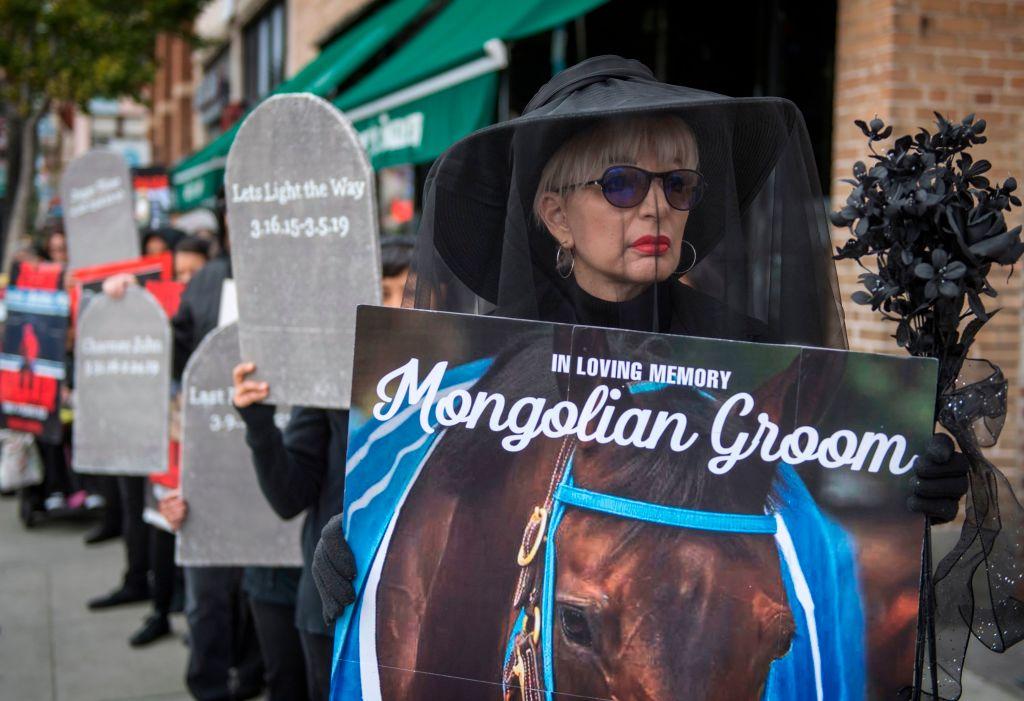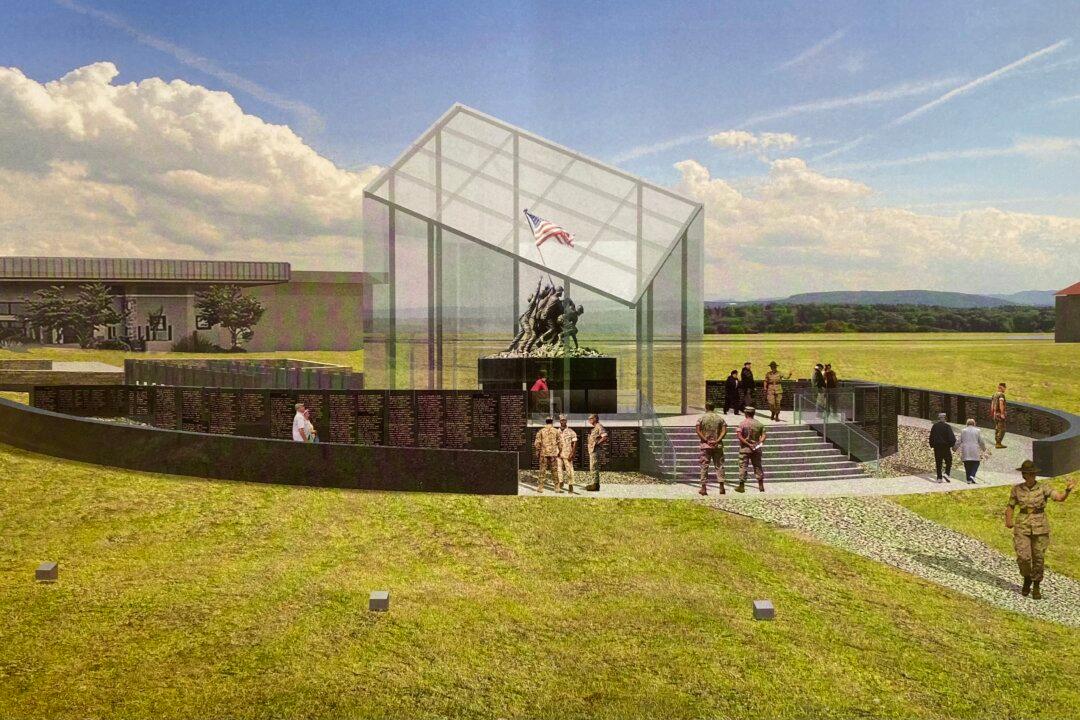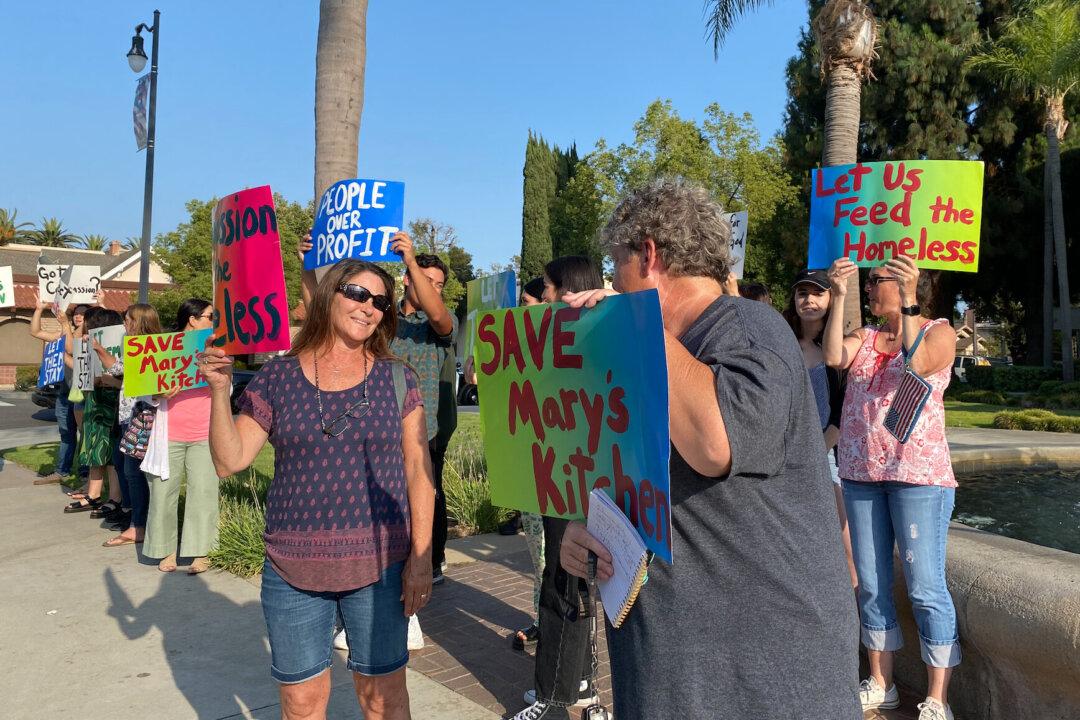ORANGE, Calif.—Twenty-nine horses have died this year at Los Alamitos Race Course in Orange County, California, triggering a 10-day probation at the track and a new safety plan for horse welfare.
“These animals are seen as nothing more than running piggy banks,” Heather Wilson, a local activist, told The Epoch Times. “It’s magnificent watching these horses run, but when you know what’s actually behind it—I mean, these horses are in their stalls, their 12-by-12 stalls, 23 hours a day. They’re confined most of their lives.”





